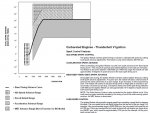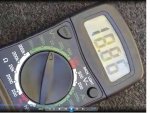Followed the procedures outlined here in the [FONT="]HOW TO: Testing your boats fuel system [/FONT]thread and have a question about the results.
First test for airbound/leaky system - no leaks.
Second test for vacuum testingt the fuel system - 0 in. Hg, so no obstructions/restrictions.
Third test for testing the fuel pumps ability to create a vacuum - failed this one. Started at 5 and slowly dropped. In the thread, it says that if the pump can not generate 6 to 9 Hg of vacum over 10 seconds then it needs to be replaced. Is this true for a low pressure fuel pump on an inboard motor?
I have a reman 5.7l Vortec with new 600 cfm Edelbrock 1409 carb, new Carter 6-9 psi pump (72 gph) and new Holley 4.5-9 psi fpr set at 5.5 psi (recommended setting for the carb). Even unrestricted, I don't think this pump will get close to 9 psi. I originally had a Carter 4-6 psi pump, but I was only getting 3 psi at the carb.
Thanks!
First test for airbound/leaky system - no leaks.
Second test for vacuum testingt the fuel system - 0 in. Hg, so no obstructions/restrictions.
Third test for testing the fuel pumps ability to create a vacuum - failed this one. Started at 5 and slowly dropped. In the thread, it says that if the pump can not generate 6 to 9 Hg of vacum over 10 seconds then it needs to be replaced. Is this true for a low pressure fuel pump on an inboard motor?
I have a reman 5.7l Vortec with new 600 cfm Edelbrock 1409 carb, new Carter 6-9 psi pump (72 gph) and new Holley 4.5-9 psi fpr set at 5.5 psi (recommended setting for the carb). Even unrestricted, I don't think this pump will get close to 9 psi. I originally had a Carter 4-6 psi pump, but I was only getting 3 psi at the carb.
Thanks!





















